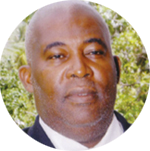
WELCOME students to the Open School for the first term for the academic or school year 2022 to 2023. I know you are very excited about attending school. Hope the lessons taught today would enlighten you a great deal.
Our lesson today is on “How Children Learn.” A continuation of the first lesson . At the end of the lesson, students will be able to (a) explain, in a simple sentence, what is self- regulation? (b) list three strategies which teachers could use to promote learning.
In the first lesson, we learnt that learning requires the active participation of the learner in the learning process. That learning is a social process, and that social participation in the social life of the school is central for learning to take place. And that people learn best when they participate in activities that they understand to be useful in real life and are culturally relevant.
Today, we will learn three other principles which promote learning.
Classroom teachers should relate new information to prior Knowledge. Because I love Mathematics and it was a subject I enjoyed teaching, I will take a concept from Mathematics to explain that strategy.
I choose the concept of Rectangles. With student participation, the teacher will lead students to understand that a rectangle is a shape with four sides. The shape will be shown to the students. It has two long sides and two short sides. The longer side is called the ‘length’ and the shorter side is called the ‘width.’ To allow for more student involvement, teacher may ask students to colour their rectangle in whatever colour they wish. They would have had their crayons beforehand.
In the following lesson the teacher would be ready to teach the concept of Perimeter. Now teacher will inform the student learners that Perimeter is the distance around an object. Now in the case of the rectangle, the teacher is now ready to use the prior knowledge that the learner has already acquired.
The teacher is now ready to use the prior knowledge of the shape of a rectangle to the new knowledge of perimeter. She may say the rectangle has a short side called the width, and the longer side that is called the length. Therefore the rectangle has two widths and two lengths or two lengths and two widths.
Now to find the perimeter of the rectangle, we must go around the rectangle; that is length plus width, plus length plus width or we say two lengths plus two widths would give us the perimeter or distance around the rectangle.
Now the teacher will now be ready to introduce the learner to a formula or quick way of finding the perimeter of a rectangle. That is Length plus width, multiply by 2. (L+W x2). In other words (2L + 2W) will give the perimeter or distance around the rectangle.
Now if we say the length is 8 metres and the width 5 metres. Then the perimeter will be (8m + 5m) x 2; that is (13m) x 2 is 26 metres. The distance around the rectangle or the perimeter is 26 metres.
The teacher will then summarize at the end of the lesson to find out if the level of learning took place during the teaching.
Indeed, the teacher can help students to activate the prior knowledge and use it for the task at hand. One of the ways in which the teacher can do this is by discussing the content of a lesson before starting in order to ensure that the students have the necessary prior knowledge and in order to activate this knowledge.
In order to foster or promote learning, the teacher must be strategic. Students learn by employing effective and flexible strategies that help them to understand, reason, memorize and solve problems.
Strategies are important because they help students or learners understand and solve problems in ways that are appropriate for the situation at hand. Strategies can improve learning and make it faster.
Another principle of learning is for the teacher to engage the children in self-regulation and being reflective. The term ‘self-regulation’ means students’ ability to monitor their own learning, to understand when they are making errors and to know how to correct them.
Now self-regulation requires reflection in the sense of being aware of one’s own beliefs and strategies. Reflection can develop through discussion, debates and essays, where children are encouraged to express their opinions and to defend them.
Now in many families, children are not allowed to express their opinions. An opinion is a view or judgement formed about something, not necessarily based on fact or knowledge. They are not allowed to voice their opinion on an issue or issues of great importance.
The great educationist and philosopher Maria Montessori said that children have their opinions and must be allowed to express them.
As an educator, I can tell you that allowing children to express their opinions could help them improve their Language skills; in speech, expressive writing, in discussion and debates, and the like.
Again, I’m saying that teachers or facilitators of learning can provide opportunities for students to plan how to solve problems, design problems and experiments and read books.
Teachers can also provide opportunities to evaluate statements, arguments, solutions to problems of others as well as their own.
As a classroom teacher, I did not only give my students to solve problems but also allowed them to formulate problems on any area in Mathematics. I also allowed them to solve the problems they have formulated.
Now two questions for you:
(a) Explain, in a simple sentence, what is meant by self- regulation? (b) List three strategies which teachers could use to promote learning.





